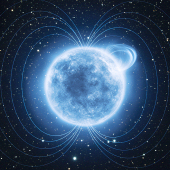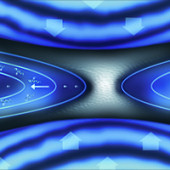ESA Science & Technology - News Archive
News archive
News archive
Near-Earth space is populated by charged particles - electrons and ions - which occupy regions known as the plasmasphere and the Van Allen radiation belts. Over the past decade, the four identical spacecraft of ESA's Cluster mission have made numerous studies of these regions, and a recent paper has revealed intriguing links between these...
Published: 10 September 2013
ESA has completed the Near-Infrared Spectrograph, one of two instruments it is contributing to the international James Webb Space Telescope, a space observatory set for launch on an Ariane 5 rocket in 2018.
Published: 6 September 2013
Astronomers have used the NASA/ESA Hubble Space Telescope and ESO's New Technology Telescope to explore more than 100 planetary nebulae in the central bulge of our galaxy. They have found that butterfly-shaped members of this cosmic family tend to be mysteriously aligned - a surprising result given their different histories and varied properties.
Published: 4 September 2013
The Ninth European Announcement of Opportunity for observations to be performed with Suzaku, starting in April 2014, is now open. Scientists belonging to institutions within ESA Member States are invited to respond. The deadline for receipt of proposals is 13 November 2013 at 16:00 CET.
Published: 2 September 2013
Proposals are solicited for observations with XMM-Newton in response to the thirteenth Announcement of Opportunity, AO-13, issued 27 August 2013. This AO covers the period May 2014 to April 2015 and is open to proposers from all over the world. The deadline for receipt of proposals is Friday, 11 October 2013, 12:00 UT.
Published: 27 August 2013
Astronomers have used observations from Hubble's CANDELS survey to explore the sizes, shapes, and colours of distant galaxies over the last 80% of the Universe's history.
Published: 15 August 2013
Astronomers using ESA's XMM-Newton have measured the magnetic field in a small surface feature of a magnetar for the first time. Until now, only the dipolar magnetic field of magnetars had been measured. With a new technique, the astronomers have revealed a strong, localised magnetic field in the magnetar that had the lowest dipolar field of all.
Published: 14 August 2013
Astronomers using the NASA/ESA Hubble Space Telescope have solved the 40-year-old mystery of the origin of the Magellanic Stream, a long ribbon of gas stretching nearly halfway around the Milky Way.
Published: 8 August 2013
Some galaxies hit a point in their lives when their star formation is snuffed out, and they become "quenched". Quenched galaxies in the distant past appear to be much smaller than the quenched galaxies in the Universe today. This has always puzzled astronomers - until now.
Published: 1 August 2013
The release of a new catalogue from the XMM-Newton space telescope provides an unprecedented cosmic X-ray library for the exploration of the extreme Universe. The third XMM-Newton Serendipitous Source Catalogue (3XMM-DR4) contains more than half a million sources.
Published: 23 July 2013
Scientists have discovered a long-sought piece in the puzzle of where high-energy particles in Earth's magnetosphere come from. Using data from ESA's Cluster mission, they found that magnetic reconnection can accelerate electrons to very high energies, as long as reconnection happens at a variable pace rather than steadily.
Published: 18 July 2013
The annual bilateral reporting meeting between PRODEX and its Irish delegates (from Enterprise Ireland) took place in Dublin on 6 June 2013.
Published: 11 July 2013
Astronomers using the NASA/ESA Hubble Space Telescope have, for the first time, determined the true colour of a planet orbiting another star. If seen up close this planet, known as HD 189733b, would be a deep cobalt blue, reminiscent of Earth's colour as seen from space.
Published: 11 July 2013
The Royal Observatory of Belgium invites proposals from potential Guest Investigators for the analysis of data from PROBA2's two solar observation instruments, SWAP and LYRA. Proposals in response to this Fourth Call for Ideas must be received by 16 August 2013.
Published: 10 July 2013
The construction of ESA's Euclid space mission to explore the 'dark Universe' will be led by Italy's Thales Alenia Space as prime contractor, beginning the full industrial phase of the project.
Published: 8 July 2013
A steady wind, discovered by ESA's Cluster mission, is slowly escaping from Earth's plasmasphere - the torus of plasma that surrounds our planet's atmosphere. The outflow amounts to almost 90 tonnes a day. Predicted by theory two decades ago, this is one of the main mechanisms that replenishes Earth's magnetosphere with fresh plasma.
Published: 2 July 2013
ESA's billion-star surveyor, Gaia, has completed final preparations in Europe and is ready to depart for its launch site in French Guiana, set to embark on a five-year mission to map the stars with unprecedented precision.
Published: 27 June 2013
The Hubble Space Telescope has produced this vivid image of a pair of interacting galaxies known as Arp 142. When two galaxies stray too close to each other they begin to interact, causing spectacular changes in both objects.
Published: 20 June 2013
ESA has extended the productive lives of 10 of its operating space science missions. This decision secures funding for ESA's world-class science missions until at least the end of 2014, and provides a framework for planning until end of 2016.
Published: 20 June 2013
As the closest planet to Earth, Venus is a relatively easy object to observe. However, many mysteries remain, not least the super-rotation of Venus' atmosphere, which enables high altitude winds to circle the planet in only four days. Now images of cloud features sent back by ESA's Venus Express orbiter have revealed that these remarkably rapid...
Published: 18 June 2013
—
20 Items per Page



















